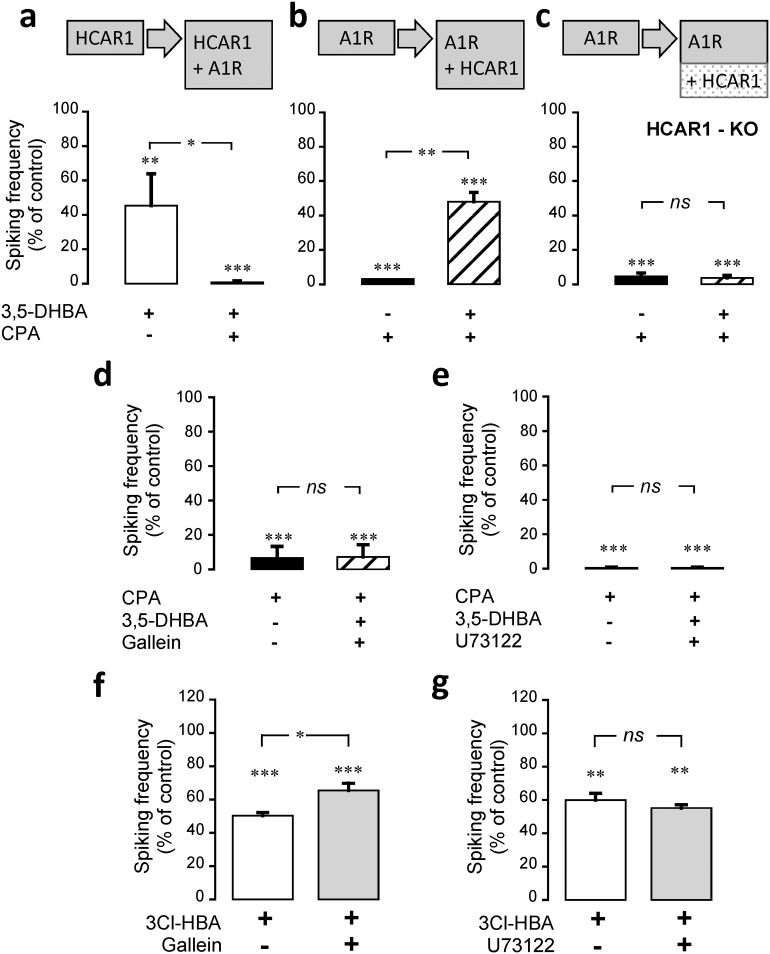Figure 5.
HCAR1 interaction with other Gi-coupled receptors for the modulation of neuronal activity. a, HCAR1 was first activated using 3,5-DHBA (1 mm) and in a second phase, the agonist of A1R, CPA (30 nm), was coapplied, which caused a stronger decrease in spiking activity compared with HCAR1 activation alone. The same protocol was performed with a reverse order of receptor activation (i.e., first CPA and then 3,5-DHBA application). b, c, Although the secondary 3,5-DHBA application caused a partial reversal of inhibition in neurons from WT animals (b), it had no effect on neurons from HCAR1 KO animals (c). d, e, The effect of the coactivation of A1R with HCAR1 in the presence of gallein (10 μm), a βγ subunit signaling inhibitor (d), or U73122 (10 μm), a PLC blocker (e), is shown. Both treatments prevented the partial reversal of inhibition observed in b. f, g, Effect of βγ subunit inhibition using gallein (10 μm; f) and of PLC blockade with U73122 (10 μm; g) on HCAR1 activation alone using 3Cl-HBA-HBA (40 μm). Inhibition of βγ subunit partially reverted HCAR1 effect on neural activity; however, PLC blockade did not influence the HCAR1 effect. Data are the mean ± SEM from 21 cells, 4 experiments (a); 20 cells, 4 experiments (b); 27 cells, 4 experiments (c); 26 cells, 4 experiments (d); 14 cells, 3 experiments (e); 33 cells, 4 experiments (f); and 22 cells, 3 experiments (g). Significance is shown compared with control and among conditions. *p < 0.05, **p < 0.01, ***p < 0.001, ns, not significant.

